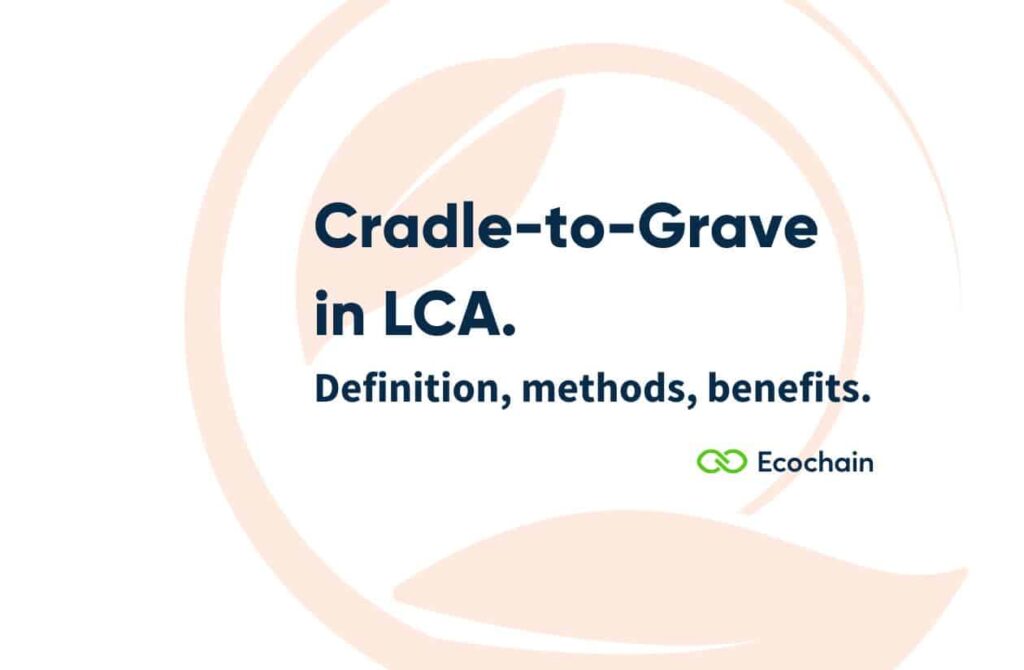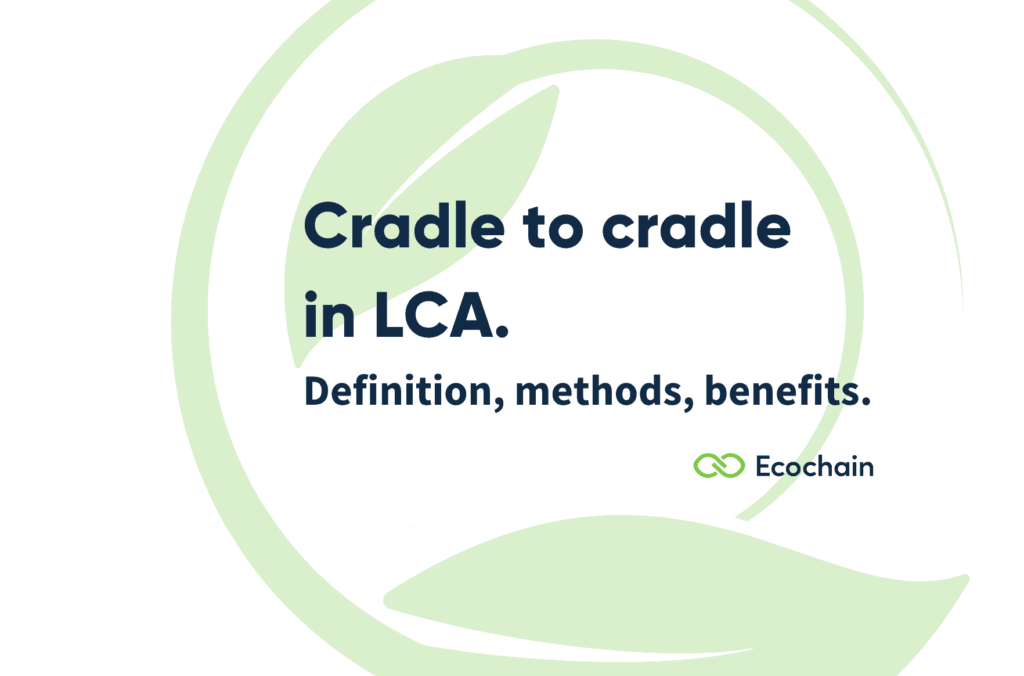Comparison of Top LCA Software: Your Ultimate Guide to LCA Solutions
Comparison of Top LCA Tools: Your Ultimate Guide to LCA Solutions Life Cycle Assessment (LCA) is the scientific method to measure the environmental footprint of products and services. Sustainability, climate change, the circular economy – they’re all becoming part of everyday business. As a result, the market for LCA tools develops quickly. Companies have an increasing need for […]
Cradle-to-Grave in LCA: What Is It & How Does It Work?

The term “Cradle to Grave” is completely intertwined with the scientific method Life Cycle Assessment (LCA). LCA is thé scientific method to measure all environmental impacts of a product. Cradle-to-grave is one of several “life cycle models” you can choose in your measurements – and determines the scope of insights you gain from your LCA. […]
Cradle-to-Cradle in LCA: What Is It & How Does It Work?

Cradle-to-cradle or cradle to cradle, does not let old products go to waste. Instead, a product’s materials and components are repurposed or recycled. This keeps materials “in the economic loop” and saves energy during production. Win-win. The “circular economy” received increasing international attention since 2010. Its main purpose: revolutionize how materials are used in our […]
Ecodesign for Sustainable Products Regulation (ESPR) – 2024 Overview

What is the Ecodesign Directive? The European Ecodesign Directive (Directive 2009/125/EC) sets ecological standards for the design of specific product groups in the member states of the European Union. It works alongside its “sister directive,” the Energy Labeling Regulation, which governs the energy labeling of such products—commonly seen on appliances like fridges and washing machines. […]
10 Common LCA Mistakes and How to Avoid Them
Like anything data-related, life cycle assessment (LCA) results are susceptible to mistakes or oversights along the way. Bewaring common mistakes and self-assessing your performance can save you money on professional reviews, and increases your hands-on LCA knowledge! To get a reliable and accurate LCA, in this article, you’ll learn about the most common mistakes (such […]
Why a life cycle assessment is essential for sustainable product design

Without knowing your company or product’s environmental impact, it’s almost impossible to know where to begin and what changes you need to make. This is why a life cycle assessment (LCA) is a critical starting point for sustainable product design. There’s an urgency for action as climate change has become a global crisis, and the time […]
EU law will ban ‘climate-neutral’ claims by 2026
False product claims such as “eco friendly”, “carbon neutral” and “biodegradable” could be a thing of the past. The EU is moving ahead with plans to eradicate greenwashing, which is the use of misleading green labeling claims and ads. The plan The EU Parliament and Council have reached a provisional agreement on new rules to […]
Sustainability in Product Design: How To Improve Today
We all know it – consumption is ruining our planet. Therefore, it’s vital to make the products we need more sustainable. Luckily, choosing “greener” raw materials only scratches the surface of what Sustainable Product Design can do – how about enhancing the durability and repairability of your products, or leveraging sustainable consumer behavior with your […]
How to Verify Your LCA Results

How do you know you can trust someone’s LCA results? Well, LCA is a scientific method. And, akin to peer review in science, when verifying an LCA, independent experts give their “approval stamp”. Here, you’ll learn about the different protocols for verification and how to get your LCA verified. Verification confirms: The LCA complies with […]
From Data to Impact Data: Impact Assessment in LCA (LCIA)

In LCA we scientifically measure the environmental footprint of a product. And the most essential ingredient (and output) is “data”! Data has different shapes along the LCA-process: In LCA phase 2 (image below), the inventory analysis, we map and gather the total emissions (to air, soil, water), resource extractions, and land use/transformations that our product […]
